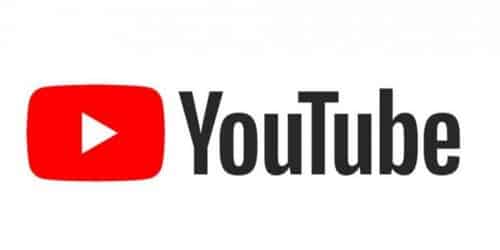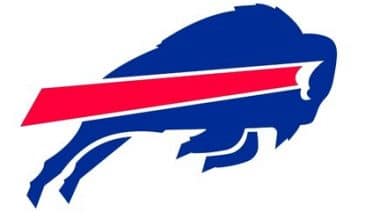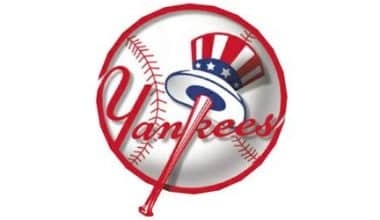Since the year it was founded in 2005, YouTube has been the number one and sole website that hosts videos. The regional substitutes and Twitch are the only two platforms that come close. In a nutshell, if you’re looking to kill some time viewing videos, Youtube is your best bet, no matter what your preferred genre. The playback button’s graphic representation is a symbolic representation of the core values of the biggest American video hosting. With the use of such visual elements, the YouTube logo conveys the primary goal, area of expertise, and emphasis of the company. This piece focuses on the history of the youtube channel as well as the youtube logo.
Youtube Logo History
Hurley, a famous Silicon Valley entrepreneur, graphic designer, and author of the original PayPal emblem, also came up with the name and logo for YouTube. Although he was YouTube’s executive director, he was ultimately responsible for the company’s reputation. Then, at some point, he had to face his pals with the truth, that this is basically the logo for a brand new online service. Hence, there was no debate or dissenting votes on the final judgment.
The artist who painted the well-known figure said that Walt Disney was a major influence. Maybe that’s why Hurley’s explanation of the YouTube logo was so engaging. Since “Tube” is simply a slang term for cathode ray tube (CRT) televisions, it makes sense that they would use this term. To show this, the large red rectangle where this word is written is meant to look like the screen of a device lit by electron beams.
This brightest YouTube element’s design, however, was frequently altered. Since the volume gradient was of primary concern in 2005, a rounded rectangle lost its dimensionality and went flat red in 2011. But, the color was originally blue until 2013. However, as part of its branding strategy, YouTube has not deviated from its traditional look in any other way.
YouTube Logo 2005-2011
The brand new youtube logo combines both graphic elements and text. It consists of two halves of the name of the Internet service. The first features the word “You” in black, written in stretched-out grotesque letters. While the second features the word “Tube” in white lettering set within a massive red rectangle that fades to a dark color palette.
YouTube Logo 2011–2013
The original was preserved, however the color scheme was altered. The rectangle, for one, is now a deep burgundy color, while a gray nebula has developed at the word “Tube”‘ is ascending all the way to its centre.
YouTube Logo 2013-2015
As a result of a makeover in 2013, the right-most rectangle of the logo now has a scarlet hue and a subtle gradient along its lower edge. On the left, the word “You” has turned into a solid black.
YouTube Logo 2015–2017
There was yet another shift in color scheme with the subsequent youtube logo redesign. In this iteration, however, the blank space at the bottom of the rectangle has been filled in. He now also sees a solid red background without any gradations.
YouTube Logo 2017- Present
The management decided to completely overhaul the youtube logo in 2017. In the current iteration, “YouTube” is written entirely in capital letters. It’s preceded by a red rectangle button with a white triangle in the center. Basically, pressing this button will begin playing the video. The sole alteration to the inscription’s aesthetic was an elongation of the recess at the letter “Y.”
In 2012, business owners concluded that the CRT symbol did not adequately represent the largest video hosting service in the world. As a result, they planned to update their web service with 21st-century technology-unique features and functions. It was nevertheless a change that affected YouTube in every way.
The head of the art department, Christopher Bettig, opined that most people misunderstand the name “Tube” and wonder why the logo is shaped like a rectangle. This led to the decision to ditch the crimson TV screen and highlight the “Tube” logo instead of the video player symbol. As a result, the company underwent its most extensive overhaul yet.
However, it’s important to note that the alterations were merely “cosmetic.” So that YouTube wouldn’t lose its popularity, the owners were afraid to make any major changes. They highlighted the simplicity of switching between the website and the various YouTube apps (YouTube Kids, YouTube Music, YouTube TV, YouTube Red, and YouTube Gaming). Achieving this was made possible by the new logo’s universal design, which allowed for the incorporation of all these offerings.
Bettig and his group tried out a single Y icon as an initial trial. Then they realized that this was a losing strategy and came up with a simpler one. Hence, they kept the original inscription but added a red play button. This is prominent in every video and instantly recognizable as belonging to YouTube.
Shape
The current design features the black “You” and white “Tube” on a red “antique TV screen,” much like earlier iterations. However, the formerly “curved” screen is now completely flat due to the elimination of shading.
Similar to the standard YouTube logo, the icon has undergone multiple iterations of refinement. Previously, the icon just displayed the project’s name across two lines. However, as of 2011 it has been updated to incorporate a play button. In 2013, the button’s triangle-to-rectangle ratio was adjusted, and in 2017, the button was finally colored a solid red.
YouTube Logo Color
White, black, and red are the three colors used in the YouTube logo, and together they form a sharp contrast. Optimism, purity, elegance, perseverance, and excellence are all emphasized. Generally, YouTube’s success can be attributed to these factors.
YouTube Logo Font
All previous YouTube logos featured the instantly recognized Helvetica font. This was commonly used in television broadcasts beginning in the 1950s. However, after the most recent redesign, the previously utilized clean modern typeface was replaced with a narrower and more elegant font that is quite similar to Indecise Condensed Medium, another popular typeface used by many respectable brands and companies.
Icons
Already, the red and white mark is among the most well-known graphical logos in existence. Although the YouTube icon contains no novel features, when put together they provide a strong and memorable logo for the website.
In 2017, the logo underwent a complete overhaul. The icon changed from white letters on a red background to something much more geometric and hip. To emphasize the site’s focus on video streaming and file downloads, a red “Play” button appears to the left of the company name. The figure is still a smoothed rectangle. However, it is much less prominent than in earlier logo iterations.
Basically, it’s just a tiny white triangle on a completely crimson background. Exact duplicate of the service’s goals, priorities, and ideals. The triangle’s orientation to the right indicates forward motion and growth, while the colors themselves reflect authority and clout. And, of course, the “play” button for the countless videos that YouTube hosts for its global audience.
History of Youtube
YouTube is a video-sharing website that was started in February 2005 by three ex-employees of PayPal: Chad Hurley, Steve Chen, and Jawed Karim. However, the website was purchased by Google in November 2006 for around US$1.65 billion, and it has been running as a wholly owned subsidiary of Google ever since.
Users can create videos, watch those uploaded by others, rate them with likes and dislikes, share them, add them to playlists, report them, comment on them, and subscribe to other users’ channels. The platform’s principle is that anyone can run a personal broadcasting station similar to television with the addition of video on demand. Hence the platform’s motto of “Broadcast Yourself” which has been used for several years.
As a result , the website provides access to a diverse collection of videos produced both by users and by established media companies. Videos, TV shows, music videos, documentaries, audio recordings, movie trailers, live streaming, and other content types such as vlogs, short original videos, and educational videos are all also available.
As of February 2017, over 400 hours of video were being posted to YouTube every minute, with 1 billion hours of video being viewed daily. According to data from Alexa Internet, as of October 2020, YouTube was the second most visited website in the world, behind only Google. Since May of this year, almost 500 hours of new video have been posted to YouTube per minute. YouTube is expected to make about US$15 billion in yearly revenues, based on reported quarterly advertising revenue.
Criticism
YouTube’s operations have been criticized for a variety of reasons. These, include how it deals with copyrighted material, how its recommendation algorithms spread videos that spread conspiracy theories and falsehoods, how it hosts videos ostensibly aimed at children but which actually contain violent or sexually suggestive content involving popular characters, how videos of minors attract pedophilic activities in their comment sections, and how its policies on trolls and harassment change over time.
Internationalization
In order to introduce the new localization mechanism, Google CEO Eric Schmidt was in Paris on June 19, 2007. There are 108 regional variants, 1 territory (Hong Kong), and a global variant of the website’s user interface.
The Hong Kong release was announced on October 17th, 2007. YouTube co-founder Steve Chen previously stated that the company’s sights were set on Taiwan.
Due to the banning of the Taiwanese flag, YouTube was unavailable in Mainland China as of October 18. Video hosting site YouTube had its URLs moved to the Chinese search engine Baidu. On the 31st of October, it was finally freed from its blockade.
Based on the user’s IP address, the YouTube interface recommends the appropriate local version. However, due to copyright limitations or unsuitable content, you may get the message “This video is not available in your country.” Access to YouTube was blocked in Turkey between 2008 and 2010, following controversy over the posting of videos deemed insulting to Mustafa Kemal Atatürk and some material offensive to Muslims. The website’s interface is available in 76 language versions, including Amharic, Albanian, Armenian, Burmese, Kyrgyz, Mongolian, Persian, and Uzbek, whose countries do not have local channel versions.
You can access the Turkish-language version of YouTube at youtube.com.tr, which became live in October 2012. Premium music videos were restricted in the United Kingdom in March 2009 due to a dispute between YouTube and the British royalty collection agency PRS for Music. Since no agreement was reached with the big record labels, they removed their movies from the sites where they had been hosted. Nevertheless, a compromise was reached in September of 2009. In other words, German customers also lost access to premium music videos in April 2009 due to a similar issue.
Main Purpose of the Youtube
In order to introduce the new localization mechanism, Google CEO Eric Schmidt was in Paris on June 19, 2007. There are 108 regional variants, 1 territory (Hong Kong), and a global variant of the website’s user interface.
The Hong Kong release was announced on October 17th, 2007. YouTube co-founder Steve Chen previously stated that the company’s sights were set on Taiwan.
Due to the banning of the Taiwanese flag, YouTube was unavailable in Mainland China as of October 18. Video hosting site YouTube had its URLs moved to the Chinese search engine Baidu. On the 31st of October, it was finally freed from its blockade.
Based on the user’s IP address, the YouTube interface recommends the appropriate local version. Due to copyright limitations or unsuitable content, you may also get the message “This video is not available in your country.” Access to YouTube was blocked in Turkey between 2008 and 2010, following controversy over the posting of videos deemed insulting to Mustafa Kemal Atatürk and some material offensive to Muslims.
The website’s interface is available in 76 language versions, including Amharic, Albanian, Armenian, Burmese, Kyrgyz, Mongolian, Persian, and Uzbek, whose countries do not have local channel versions. You can access the Turkish-language version of YouTube at youtube.com.tr, which became live in October 2012. The content of the localized version must comply with the requirements of Turkish law.
Premium music videos were restricted in the United Kingdom in March 2009 due to a dispute between YouTube and the British royalty collection agency PRS for Music. Since the big record labels were unable to agree on a license contract, they removed their movies from the sites where they had been hosted. A compromise was reached in September of 2009.
Who are the Founder of YouTube?
Generally, the following people established YouTube: When YouTube was established in 2005, all three were still employed by Paypal.
- Chad Hurley
- Chen, Steve
- Jawed Karim
#1. Chad Hurley
Prior to working for Ebay’s PayPal subsidiary after graduating from Indiana University of Pennsylvania’s design program in 1999. He spent the most of his time at Paypal concentrating on the interface’s user experience (UX).
#2. Chen Steve
He was born in Taiwan’s Taipei in 1978. At age eight, his family moved to the United States. Prior to graduating, Steve left the Illinois Mathematics and Science Academy.
Later, he enrolled in the University of Illinois at Urbana-Champaign, where he earned a computer science degree in 2002. Later, he would work for Paypal.
#3. Jawed Karim.
East Germany’s Merseburg is where Jawed Karim was born in 1979. His mother was German and his father was Bangladeshi.
His father relocated the family to Saint Paul, Minnesota, in 1992 after encountering xenophobia in Germany. Later, Jawed attended the University of Illinois Urbana-Champaign to study computer science, but he left before finishing.
Jawed left school and soon after started working for the startup Paypal. He completed his studies while working for Paypal, eventually receiving a degree in computer science. He later attended Stanford University and received a master’s degree in computer science.
Business Model, Advertising, and profits
Prior to being acquired by Google, YouTube stated that its revenue model relied on advertisements and brought in $15 million each month.
YouTube’s operating costs were not broken down in depth by Google. Instead, company’s 2007 revenue was described as “not meaningful” in a regulatory filing. A Forbes magazine story from June 2008, which noted an increase in advertising sales, estimated the 2008 revenue at $200 million.
However, according to some industry analysts, YouTube’s operating expenses (more precisely, the network bandwidth needed) could reach $5 to $6 million per month. This, meanwhile has fueled claims that the company, like many Internet startups, has a workable business plan. On the website, advertisements first appeared in March 2006. YouTube began utilizing Google AdSense in April. After that, YouTube ceased utilizing AdSense, however, it is now back in some localized areas.
The main method used by YouTube to generate income is advertising. Scientific research has also been done on this problem. In their book Wikinomics, Don Tapscott and Anthony D. Williams make the case that YouTube is an example of an economy founded on widespread collaboration and utilizing the Internet.
Tapscott and William Claims
According to Tapscott and Williams, it’s critical for new media firms to figure out how to monetize peer-produced content. The concepts of “openness, peering, sharing, and acting worldwide” would serve as the foundation for the new Internet economy, which they refer to as “Wikinomics.” Hence, with the use of Web 2.0 apps, businesses could apply the following ideas to increase profits: “Companies can develop and assemble products with their customers, and in some situations customers can perform the majority of the value creation.” With this, according to Tapscott and Williams, the result will generally be an economic democracy.
Other points of view in the discussion concur with Tapscott and Williams that it is based more and more on utilizing open source content, networking, sharing, and peering, but they contend that the outcome is not economic democracy but a subtle form and deepening of exploitation, in which labor costs are decreased by Internet-based global outsourcing.
Christian Fuchs, for example, adopted the second point of view in his book “Internet and Society.” According to him, YouTube is an illustration of a business strategy that relies on fusing the gift with the commodity. The first is free, the second yields profit. This business strategy is innovative in that it combines two concepts that at first glance appear to be unrelated: the gift and the commodity. YouTube would generally provide users with free access, and the more users it has, the more money it may potentially make as it could theoretically increase ad rates and attract more advertisers. YouTube would also sell its audience that it obtains by free access to its advertising customers.
Internet Space
“Commodified Internet spaces are always profit-oriented. However, the products they offer are not always exchange-value and market-oriented. In some cases (such as Google, Yahoo, MySpace, YouTube, Netscape), free goods or platforms are given away as gifts to increase user numbers so that high advertising rates can be charged in order to achieve profit.”
According to RampRate, a San Francisco-based IT consulting firm, YouTube was far closer to profitability in June 2009 than it had been in earlier assessments, such as the April 2009 prediction by investment bank Credit Suisse that YouTube would lose up to $470 million in 2009. That amount was estimated by RampRate’s analysis to be no more than $174 million.
In order to allow select content producers to charge $0.99 per month or more for specific channels, YouTube started a test program in May 2013. However, the great majority of its videos will continue to be accessible for free.
How was YouTube Started?
YouTube is a very new platform, despite its current prominence. Jawed Karim, Chad Hurley, and Steve Chen, three pals, decided to upload a film online in 2005. The three searched for a video-sharing website but were unsuccessful. They made the choice to design their own at that point. YouTube was created when they uploaded their first video, “Me at the Zoo.” Videos other than YouTube challenges can now be found on the website.
Do you wish to achieve fame? In the past, most famous people had careers in film, television, or music. Today, there are as many movie stars as there are YouTube stars. Celebrities on YouTube come from many different backgrounds. They could be professional gamers or makeup artists. Some of them are simply videos of people going about their daily lives. Their channels are subscribed to by thousands of individuals. These famous people frequently start YouTube challenges!
YouTube Helps
Do you have issues with your homework? YouTube is useful! Numerous informative films can be found on the website. Everything is available, from tutorials for difficult math to simple how-to movies. Even Khan Academy began on YouTube. What makes you unique? One day, you might impart your knowledge through videos to others.
Information dissemination has become simpler thanks to YouTube. Politicians and news organizations both utilize YouTube to distribute messages rapidly. Have you ever used YouTube to watch the news or hear a famous person speak? It’s not just you! This is viewed by many as a method to stay current with happenings.
YouTube is used by others to view unboxing videos. These are videos of people using things for the first time after taking them out of their packaging. Unboxing videos exist for a variety of products. People enjoy to watch others utilize brand-new items, whether it’s makeup, video games, or toys.
There are, of course, some things to look out for on YouTube. You should never attempt every task you come across, and you should never blindly trust everything you read. Always double-check the information that people give you because anyone may upload a movie on YouTube. It’s best to consult your parents before browsing the internet and to seek their guidance before watching anything dubious. YouTube can be a terrific resource when utilized carefully by responsible online users!
Who is the first Youtuber?
Jawed Karim was the first user to upload a video to YouTube. On April 23, 2005, he posted the now-famous “Me at the Zoo” video. He solely talks about what he witnessed at the San Diego Zoo for the entire 18-second film.
Because it was one of the first videos ever submitted to YouTube, the video generally became a phenomenon online!
Meanwhile, he was one of the co-founders of YouTube. As a result, he joined the site’s early users. He still has a video on YouTube today!
Nowadays, YouTube is considerably more sophisticated and distinctive. Every day, numerous individuals upload hundreds upon thousands of movies to it. However, one of the very first films ever uploaded to what is now known as YouTube will always be Jawed Karim’s “Me at the Zoo” clip!
The term “YouTuber” has evolved over time. Hene, anyone may now become a full-time YouTuber and earn money from their channel.
What is Simple History YouTube?
The English channel Simple History on YouTube creates animated instructional history films. It’s now among the most-watched history channels on YouTube. World Wars I and II, the Cold War, and the Middle Ages are common study topics.
What was YouTube Originally Made for?
Hurley and Chen said that the website Hot or Not had impacted their idea for YouTube. This, was originally conceived as a video-based online dating service. They published ads on Craigslist in which they offered a $100 incentive to attractive ladies who would submit films of themselves to YouTube.
Who is the Most Viewed YouTuber?
T-Series had over 197 billion lifetime video views as of July 2022. This, nevertheless makes it the most popular YouTube channel owner ever. Cocomelon, a well-liked children’s rhyme and song channel, came in second place with 134 billion lifetime views. Up until the summer of 2020, Ryan’s World had the most viewers, with about 50 billion views over the time under review. Since March 2015, Ryan has generally been posting videos to YouTube. In these films, he primarily plays with and evaluates toys that are “for kids, by a kid.”
Why is YouTube So Successful?
Basically, one of the main reasons YouTube’s popularity has skyrocketed over the years is its simplicity. It’s incredibly simple for video producers to get a large audience on YouTube. There is a variety of content available as a result. YouTube therefore offers everything, including infinite beauty tips, product reviews, gaming channels, and hours of unboxing videos. You’re sure to find at least a few YouTube channels that interest you among the millions available. Let’s simply say that everyone can find something on YouTube.
Who was the First Big YouTuber?
In 2002, Anthony Padilla created Smosh.com as a social website for his high school pals. A few years later, he enlisted his best buddy, Ian Hecox, and together they started the brand’s YouTube site with a video of him dancing to the Power Rangers theme song. It was just the kind of funny, humorous, low-quality video that came to define early YouTube. Hence, they became two of YouTube’s earliest celebrities.
With over 40 million subscribers, 11 billion video views, and a fan-created Wikia site, Smosh has gone from obscurity to Internet superstardom (which arguably serves as the barometer of viral fame.) A feature film, Smosh: The Movie, starring Hecox, Padilla, and Michael Ian Black, was released by Lionsgate in 2015. The movie was slammed by critics who called it “a lowbrow comedy adventure” and “one of the worst forms of media I’ve ever laid my eyes on.” That didn’t deter Padilla’s group, However, it may have been the beginning of the end for Padilla.
Who hit 10 Million Subscribers First?
Smosh was the first YouTube channel to hit eight figures in subscribers in 2013, when it exceeded 10 million. While the actual result is quite unremarkable, the lightning speed with which it was achieved is indicative of the recent meteoric rise in the popularity of online video.
Conclusion
You Tube is a popular service for sharing and viewing videos online. Moreover, you have the option of making your own videos and sharing them with the world. YouTube is one of the most visited websites on the Internet, with users watching around 6 billion hours of video each month since its inception in 2005.
Generally, the visual representation of the playback button represents the guiding principles of the most popular American video hosting service. The YouTube logo visually represents the company’s mission, core competencies, and central focus.
Related Articles
- PLAYSTATION LOGO: Meaning, Symbol, History & Evolution (Detailed)
- MIAMI HEAT LOGO: Miami Team History and Players
- UCLA LOGO: School History and Facts
- BUFFALO BILLS LOGO






